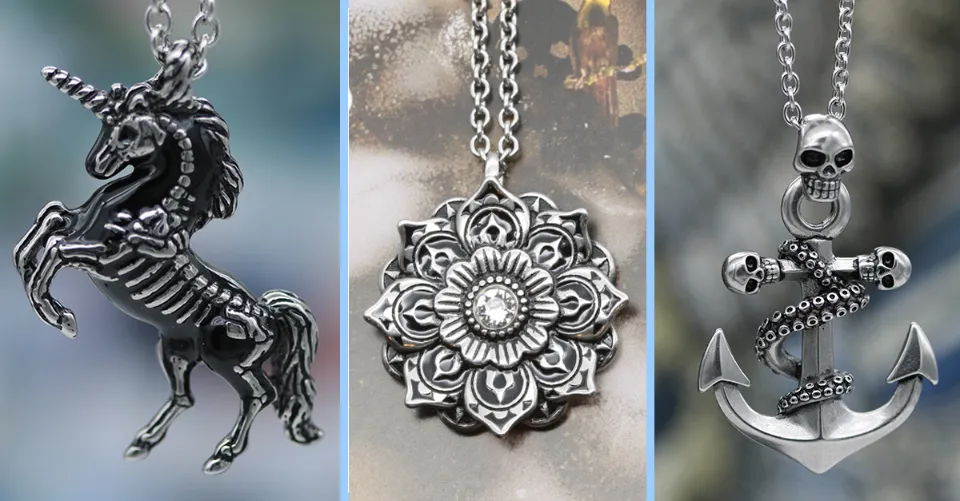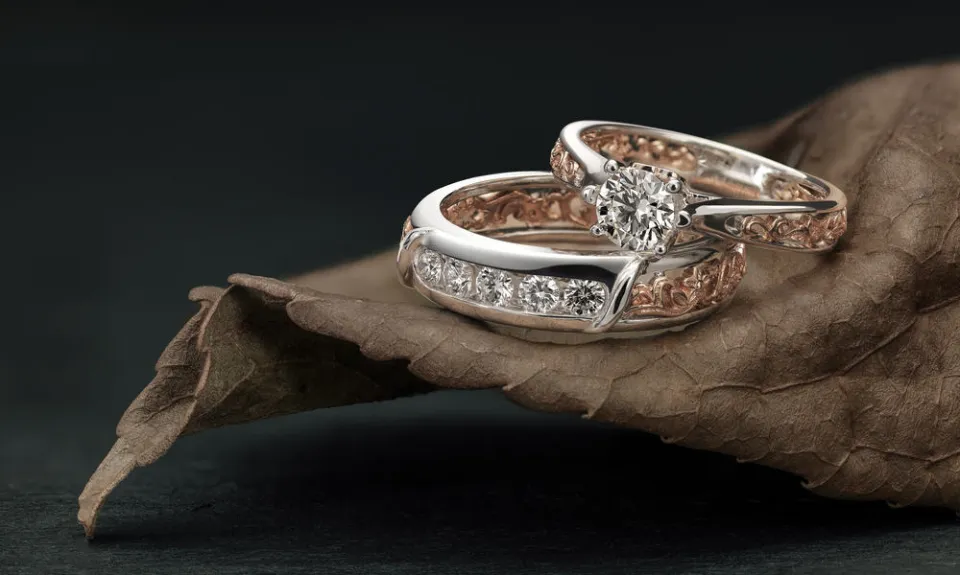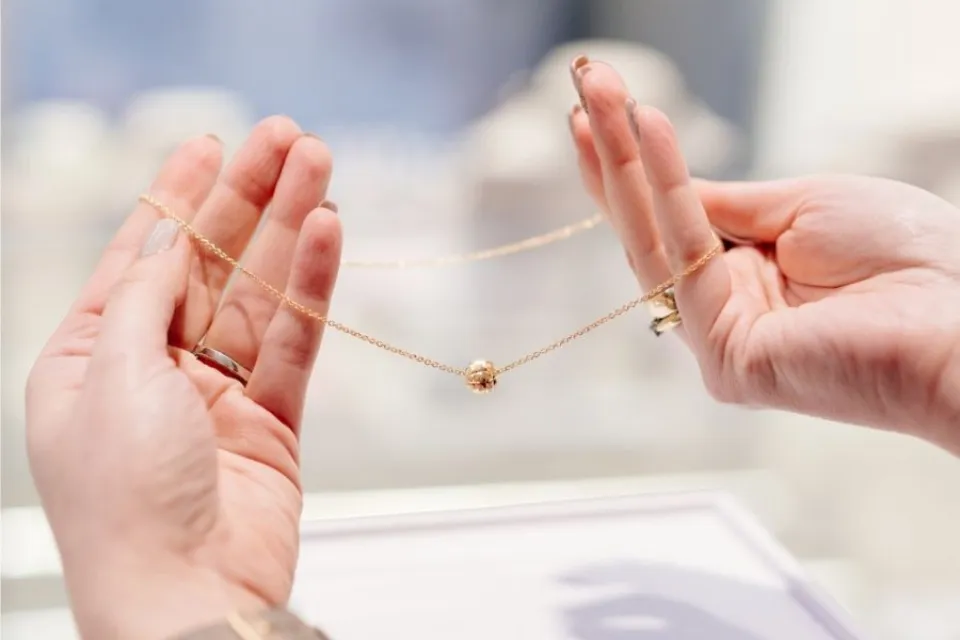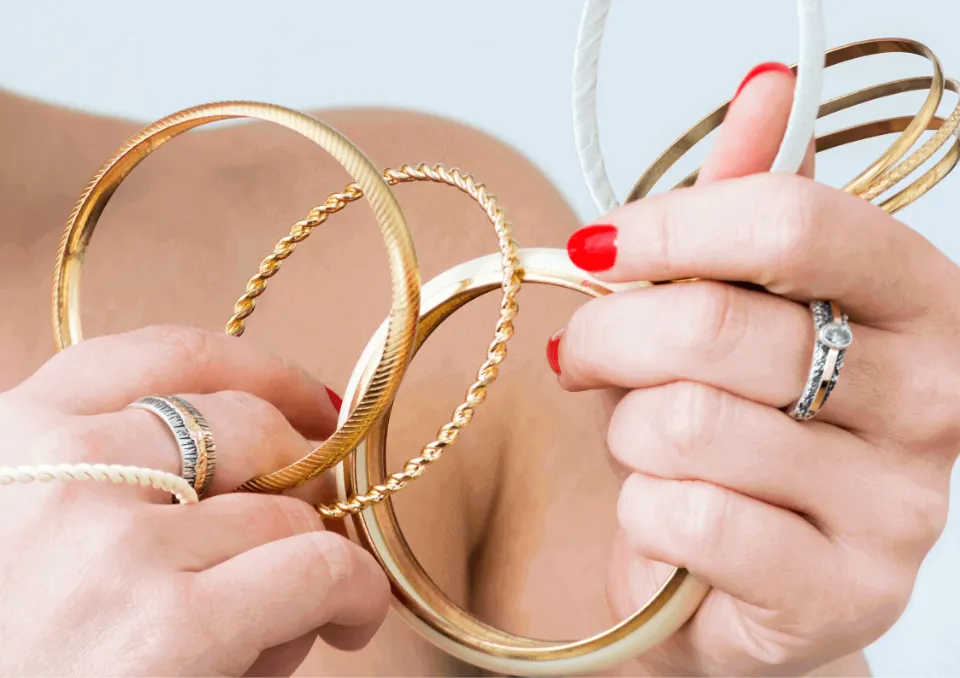Stainless steel is one of the most versatile metals we’ve discovered to date but do you know how to clean stainless steel jewelry? Don’t worry; we are here to assist you.
Due to its toughness, scratch resistance, and ongoing luster, stainless steel is now a remarkably alluring and reasonably priced jewelry metal for wedding bands.
To achieve fantastic results, follow the straightforward cleaning advice below.
What is Stainless Steel?
An alloy of iron and carbon is called steel. The presence of iron causes this material to corrode.
Iron oxidizes to form iron oxide when it comes into contact with oxygen found in the air or water.
The result is a reddish-orangish flaky material we call rust.
To make steel stainless, alloys such as chromium, nickel, silicon, copper, sulfur molybdenum, titanium, niobium, manganese, etc are added.Chromium, in quantities between10 and 30%, is added to create chromium oxide, which becomes a protective barrier against the elements, making it stainless.
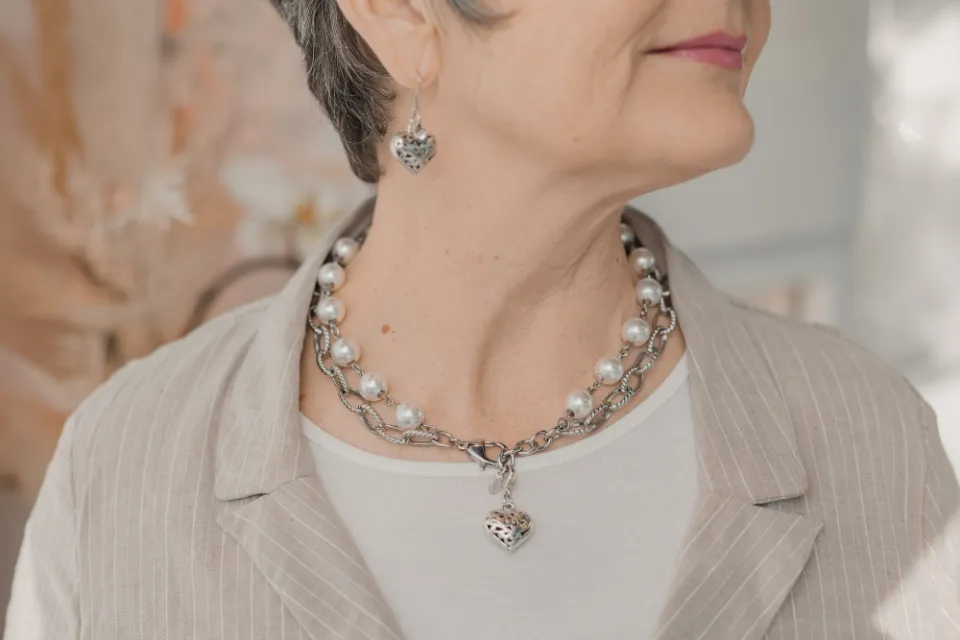
As a result, stainless steel is produced, which has corrosion and fire resistance as well as durability and environmental friendliness. Stainless steel has a low lifecycle cost and is also fairly simple to manufacture and maintain.
This material, depending on its grade, can be found in everyday items such as cutlery, washing machines, industrial piping, sinks, building structures, and of course, jewelry.
How to Clean Stainless Steel Jewelry?
Here are some effective ways you can use at home to clean stainless steel jewelry.
1. The Simple Way: Soap and Water
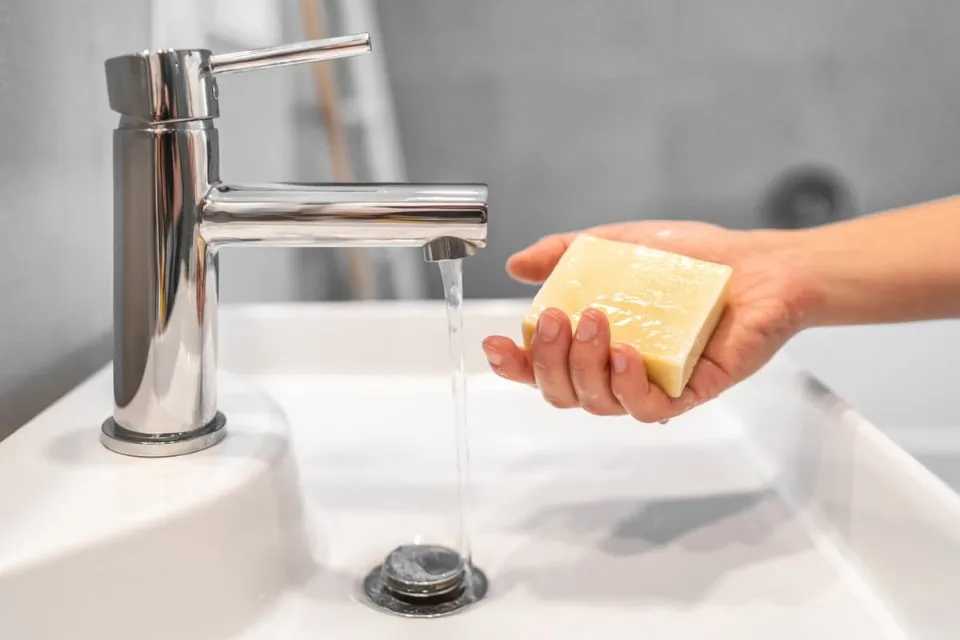
Let’s start with a few common items that are already in the house to make this process easier on yourself. Use soap and water to start. The idea is to either manually scrub your steel with a cloth or soak it in soapy water.
These procedures are effective for very small grit buildups. Begin now to boil some fresh water. Dip your clothing or jewelry into a hot water and soap solution.
After each piece has been soaked, wipe them down and give them a thorough rinse. Utilizing running water for rinsing. In a secure area, now let your jewelry air dry.
You won’t need to do much work on your newer pieces because stainless steel is naturally resistant. Things that have been kept grittier for a long time require more effort.
You might enjoy reading this review of haus naturals’ stainless steel cleaner.
The Ingredients:
- Dish Soap
- Water
- A Small Bowl
- A Dry Cloth or Paper Towel
2. Baking-Soda Paste
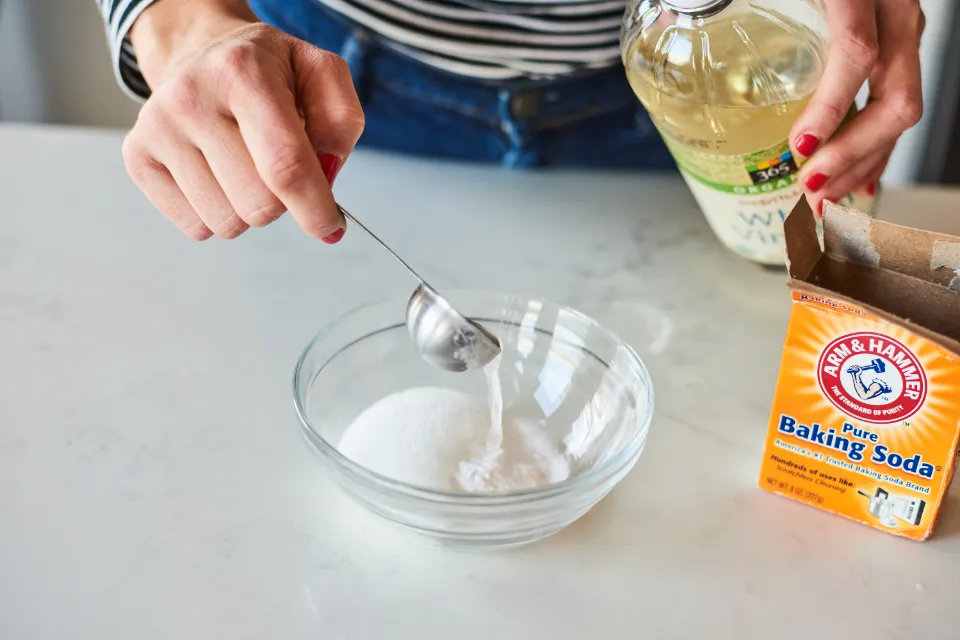
Baking soda and water are combined to make baking-soda paste. To start a chemical reaction, you can also use a mixture of vinegar. Baking soda and vinegar both have high toxicity levels.
They react acidically when they are combined. The carbon dioxide that gives them their bubbly texture can erode light compounds like dirt and grime when it reacts with an acid. Acetic acid is found in vinegar, while sodium bicarbonate is found in baking soda.
When these two substances are mixed together, a new compound is produced. Even though the mixture produces carbonic acid, which is regarded as a volatile fluid, you get to choose how powerful your mixture is. You need to use water without the vinegar to make a paste.
You can, however, regulate the intensity of your chemical reaction by using small amounts of vinegar. A mixture that resembles toothpaste can be made with just water and baking soda. Apply the paste with a soft toothbrush, but if you’re using vinegar, put your jewelry in a liquid solution.
After cleaning each item with a brush, thoroughly rinse it off. Verify that your bracelets, watches, and rings are free of any remaining dust. With a lint-free cloth, now dry them off.
Place them in a secure location and let them air dry. In search of a natural approach? Take a look at these organic stainless steel cleaners.
The Ingredients:
- Vinegar
- Baking Soda
- A Soft Toothbrush
- A Dry Cloth or Paper Towel
- Running Water
3. Ionized Baking Soda
Ionization takes the common properties of baking soda and “electrifies” them. Ion transfer—the movement of positively charged atom particles from one molecule to the next—causes the reaction. Instead of using vinegar’s acidic reaction to start this chemical reaction, use a combination of dish soap, salt, and baking soda.
In a nutshell, the procedure involves an at-home subatomic reaction that is secure. Bring the kids along to assist. It is necessary to use a sheet of aluminum foil because it will enable the chemicals to more effectively charge the metal in your jewelry.
Ionic compounds continue to flow unhindered because the foil serves as a natural ground. Start by covering the bottom and sides of a bowl with a strip of aluminum foil. 1 teaspoon of salt should be added.
Add one tablespoon of dish detergent and one tablespoon of baking soda. The next step is to pour a cup’s worth of hot water over the mixture. The aluminum foil should be placed on top of everything.
If necessary, you can increase the measure by tripling or doubling the amounts. Even though what occurs is less volatile than vinegar, ion exchange will still take place. Simply put, you won’t be able to see it, and there is nothing to shock you with.
But your metals can be polished thanks to the ion exchange’s power. Place your jewelry inside the solution now, and leave it there for 10 minutes. Accesses discovered after soaking can be removed with a toothbrush.
After washing these items under running water, allow them to dry.
The Ingredients:
- Salt
- Hot and Running Water
- Aluminum Foil
- Dish Soap
- A Large Bowl
- Baking Soda
4. Toothpaste
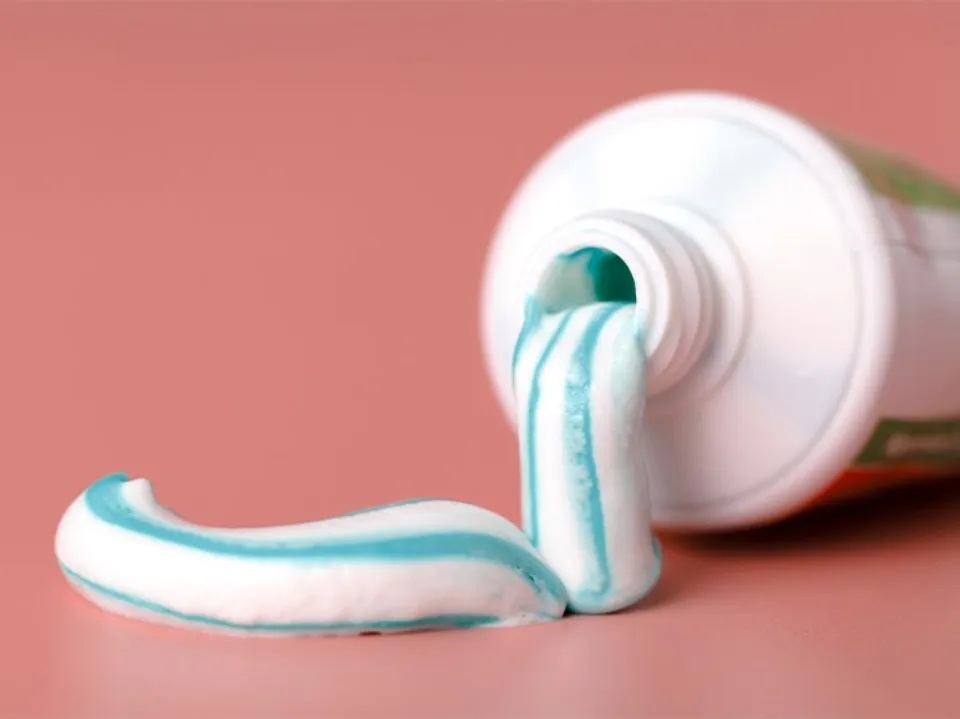
Here is a quicker method to restore the sheen to stainless steel surfaces. Locate some inexpensive toothpaste. If you already have a tube in the bathroom, don’t think about purchasing another one.
However, use a different toothbrush. The paste will still work just as well if you prefer to apply it with a damp cloth. You’ll need two bowls of warm water—one for washing your jewelry in and the other for soaking it.
The toothpaste can be added to the cloth or brush, provided that you are not using a gel base. Use toothpaste to gently clean because it uses a chemical reaction to remove surface dirt layers, just like it does with teeth. Warm water should be used to rinse your steel surfaces because it will help remove toothpaste.
Put your jewelry somewhere to air dry after drying with a lint-free cloth.
The Ingredients:
- Toothpaste
- A Toothbrush
- A Dry Cloth
- Bowls of Warm or Hot Water
5. The Ultrasonic-Jewelry Cleaner
Both precious and steel metals can be cleaned with the ultrasonic jewelry cleaner. This tool is widely regarded as the industry standard. It functions in the most basic but efficient manner possible for the level of cleaning it performs.
A sound wave is released by the ultrasonic module. A constant source of friction is created around your jewelry by its pulse. Your items must, however, float in a solution of liquid. Both liquid formulas and soap and water can be used to create your mixture.
All jewelry must be completely submerged in the liquid. Complete immersion is the best solution because some crevices in your stainless-steel jewelry simply cannot be reached with a cloth or brush. Additionally, since the machine uses a set-and-forget cycle, you must give your jewelry some room to move around due to machine vibrations. The ideal option is hot water.
Some appliances can accept hot water while maintaining the heat. Through control settings, both frequencies and temperatures can be changed. The settings choices depend on the model you purchase.
Make sure to leave all of your jewelry in the solution after a cleaning cycle. Remember to rinse your jewelry off when taking it out, just like you would with many of the earlier steps we’ve listed above. After that, let them dry out somewhere.
The Ingredients
- A Cleaning Solution
- An Ultrasonic Module
- A Drying Cloth
- Running Water
Read More:
How to Maintain Your Stainless Steel Jewelry?
Despite the fact that stainless steel does not corrode or tarnish easily, you should still make an effort to maintain it in the best condition.
Here are some things you should know about maintaining stainless steel jewelry:
- In a soft pouch or container, keep your jewelry.
- Avoid wearing stainless steel jewelry near bleach and harsh chemicals because they can cause staining.
- For best results, polish with a cloth after each clean.
- Keep sharp or abrasive objects away from stainless steel jewelry when storing it.
- You risk making a scratched piece of jewelry worse if you try to fix it yourself. Bring it to a professional.
To reduce loss, rinse your stainless steel jewelry over a bowl rather than a sink.
Tips for Keeping Stainless Steel Jewelry Clean Longer
- Before working with harsh chemicals or swimming in a chlorinated pool or hot tub, take off any stainless steel jewelry.
- Avoid coming into direct contact with hairspray, perfumes, and other cosmetics that contain alcohol or other ingredients that can corrode and dull the finish on your stainless steel jewelry. Jewelry should always be the first item taken off and the last item put on as a general rule of thumb for safety.
- Jewelry made of stainless steel should be kept in a closed jewelry box or soft bags to shield it from dust and avoid being scratched by other metals.
- Cleaning stainless steel jewelry shouldn’t be done with harsh abrasives.
How Often to Clean Stainless Steel Jewelry?
The frequency of wear dictates how frequently stainless steel jewelry needs to be cleaned. Although jewelry made of stainless steel does not rust, it can become dull due to tarnish from pollution and minor scratches.
Give your jewelry a thorough cleaning if the shine has faded. If exposed to a lot of dirt, grease, or harsh chemicals like chlorine bleach, stainless steel jewelry needs to be cleaned right away.
Final Thoughts on How to Clean Stainless Steel Jewelry
Consider purchasing a jewelry case because wearing jewelry entails responsibility because you must be prepared to care for it. Your items should be laid out on a polishing cloth.
Just be careful not to leave your pieces exposed or in the hands of chance in the environment. Protecting your jewelry and putting it away will take care of the majority of cleaning needs.
We hope this article on cleaning stainless steel jewelry proved a useful asset in your cleaning arsenal.
You May Also Like: How to Clean Brass Jewelry?
FAQs
Can You Clean Stainless Steel Jewelry With Toothpaste?
Yes. Add a dab of toothpaste and gently clean the surface of the stainless steel jewelry.
Does Vinegar Clean Stainless Steel Jewelry?
Jewelry made of stainless steel can be cleaned with vinegar. Vinegar should be diluted in water at a 1:1 ratio before cleaning.
A paste made of vinegar and baking soda can be used to clean jewelry that is extremely dirty.
Can You Wash Stainless Steel Fashion Jewelry?
For jewelry made of stainless steel, washing is too abrasive. Use a soft, lint-free cloth (microfiber) or a toothbrush with soft bristles to soak or gently spot clean instead.
Consult a professional for tough cleaning jobs.

